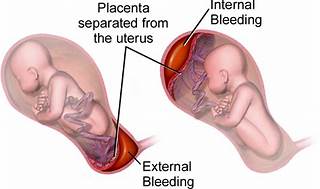A nurse is reinforcing teaching with a new mother about the purpose of administering vitamin K to her newborn following delivery. The nurse should explain that the purpose of administering vitamin K is to prevent which of the following complications?
Bleeding.
Infection.
Potassium deficiency.
Hyperbilirubinemia.
The Correct Answer is A
Choice A: The correct answer is (a) Bleeding. The purpose of administering vitamin K to a newborn following delivery is to prevent bleeding complications. Vitamin K plays a crucial role in the synthesis of blood clotting factors, specifically factors II, VII, IX, and X. Newborns have low levels of vitamin K at birth, and it takes a few days for their bodies to start producing it. This places them at risk of developing vitamin K deficiency bleeding (VKDB), which can lead to serious bleeding problems, including bleeding into the brain (intracranial haemorrhage). By giving the newborn a vitamin K injection, this deficiency is corrected, reducing the risk of bleeding complications.
Choice B rationale
(b) Infection. Administering vitamin K to a newborn is not intended to prevent infections. Vitamin K is essential for blood clotting and does not have a direct role in preventing or treating infections. Infection prevention measures involve proper hygiene practices and vaccination, but vitamin K is unrelated to this aspect of care.
Choice C rationale
(c) Potassium deficiency. Administering vitamin K to a newborn has no impact on potassium levels. Potassium is a different essential nutrient that plays a vital role in various physiological processes, but it is not related to blood clotting. The administration of vitamin K is specific to preventing bleeding complications, not addressing potassium deficiency.
Choice D rationale
(d) Hyperbilirubinemia. The correct answer is not (d) Hyperbilirubinemia. Vitamin K administration is not aimed at preventing or treating hyperbilirubinemia, a condition characterized by elevated levels of bilirubin in the blood. Hyperbilirubinemia is related to the breakdown of red blood cells and the liver's ability to process bilirubin, whereas vitamin K's primary role is in the clotting cascade.
Nursing Test Bank
Naxlex Comprehensive Predictor Exams
Related Questions
Correct Answer is A
Explanation

The correct answer is choice A, Maternal hypertension.
Choice A rationale:
Maternal hypertension is widely recognized as the most common risk factor for placental abruption. High blood pressure can cause the placenta to detach from the uterine wall, leading to abruption. In summary, while all the listed factors can contribute to the risk of placental abruption, maternal hypertension stands out as the most common cause, supported by multiple health sources. It’s important for nurses to recognize and manage hypertension in pregnant clients to minimize the risk of this serious complication.
Choice B rationale:
While maternal cocaine use is a significant risk factor for placental abruption due to its vasoconstrictive effects, which can compromise the placental blood flow, it is not as common as maternal hypertension.
Choice C rationale:
Maternal cigarette smoking is also a risk factor for placental abruption. Smoking can lead to a variety of complications in pregnancy, including placental problems, but again, it is less common than hypertension as a cause for abruption.
Choice D rationale:
Maternal battering can lead to trauma which may result in placental abruption. However, it is not considered the most common risk factor when compared to maternal hypertension.
Correct Answer is C
Explanation
The correct answer is choice c. Dry the newborn.
Choice A rationale:
Confirming identification and applying a bracelet is important for ensuring the newborn’s identity and preventing mix-ups, but it is not the immediate priority right after birth.
Choice B rationale:
Examining the newborn for birth defects is crucial for identifying any immediate health concerns, but it should be done after initial stabilization measures like drying and warming the newborn.
Choice C rationale:
Drying the newborn is the first action the nurse should take immediately after delivery. This helps to prevent heat loss and maintain the newborn’s body temperature, which is critical for their survival and well-being.
Choice D rationale:
Conducting a gestational age assessment is important for determining the newborn’s maturity and potential health risks, but it is not the immediate priority right after birth.
Whether you are a student looking to ace your exams or a practicing nurse seeking to enhance your expertise , our nursing education contents will empower you with the confidence and competence to make a difference in the lives of patients and become a respected leader in the healthcare field.
Visit Naxlex, invest in your future and unlock endless possibilities with our unparalleled nursing education contents today
Report Wrong Answer on the Current Question
Do you disagree with the answer? If yes, what is your expected answer? Explain.
Kindly be descriptive with the issue you are facing.
